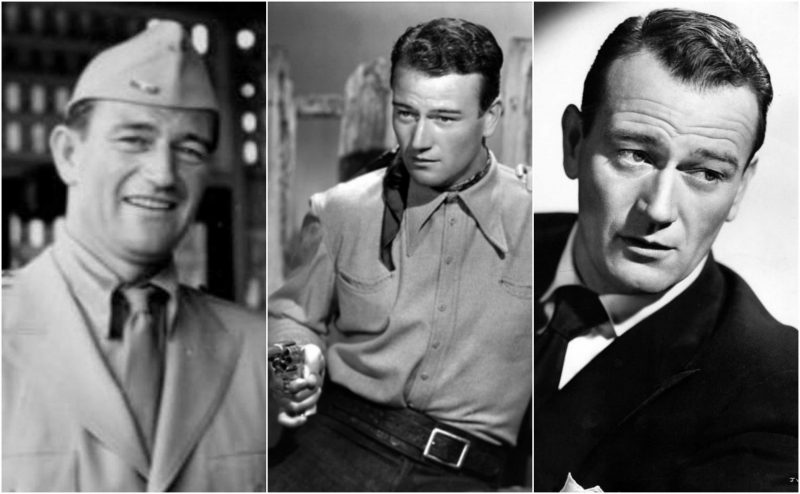Wayne rose beyond the typical recognition for a famous actor to that of an enduring icon who symbolized and communicated American values and ideals. By the middle of his career, Wayne had developed a larger-than-life image, and as his career progressed, he selected roles that would not compromise his off-screen image. At a party in 1957, Wayne confronted actor Kirk Douglas about the latter’s decision to play the role of Vincent van Gogh in the film Lust for Life, saying: “Christ, Kirk, how can you play a part like that? There’s so goddamn few of us left. We got to play strong, tough characters. Not these weak queers.” By the time of his last film The Shootist (1976), Wayne refused to allow his character to shoot a man in the back as was originally scripted, demanding “I’ve made over 250 pictures and have never shot a guy in the back. Change it.”
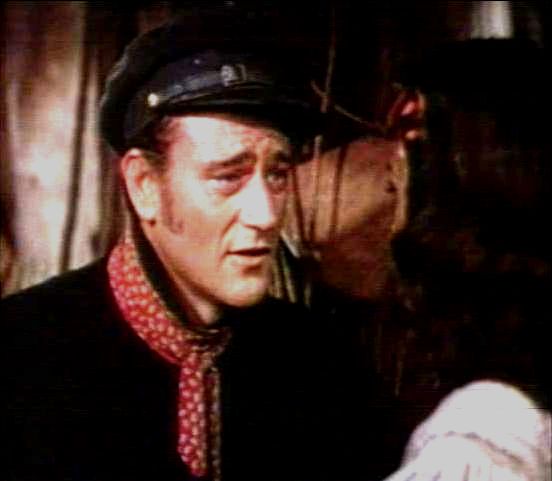
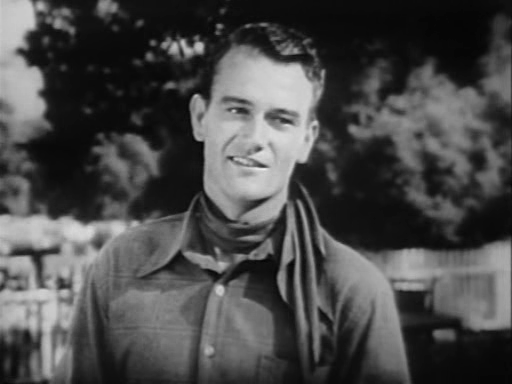
Wayne’s rise to being the quintessential movie war hero began to take shape four years after World War II when Sands of Iwo Jima (1949) was released. His footprints at Grauman’s Chinese theater in Hollywood were laid in concrete that contained sand from Iwo Jima. His status grew so large and legendary that when Japanese Emperor Hirohito visited the United States in 1975, he asked to meet John Wayne, the symbolic representation of his country’s former enemy.
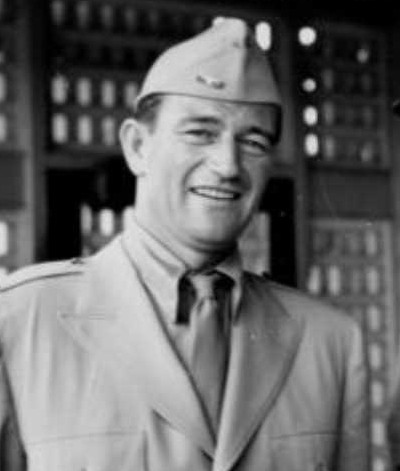
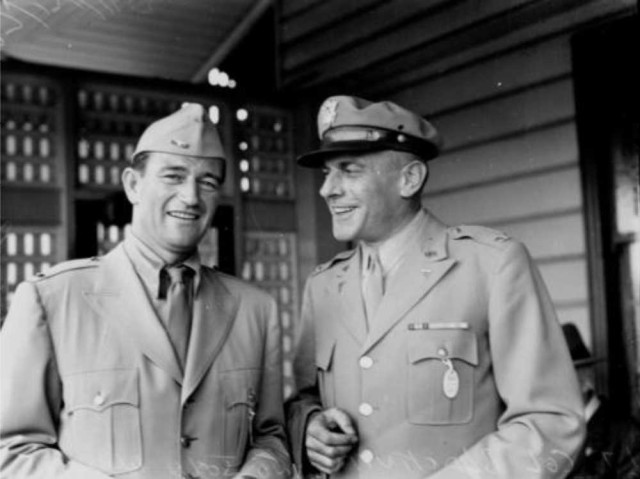
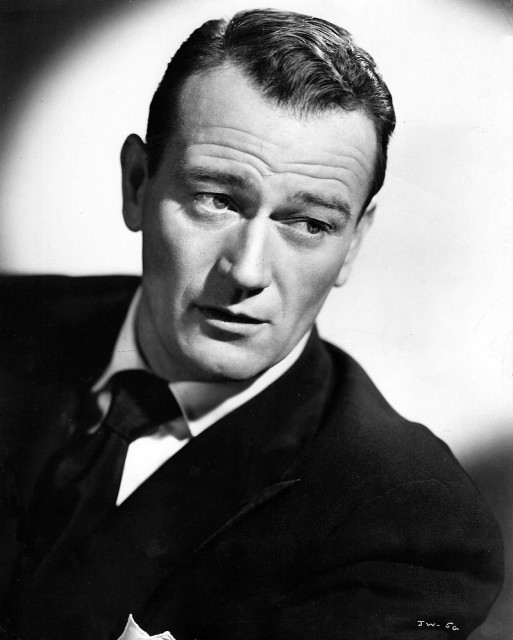
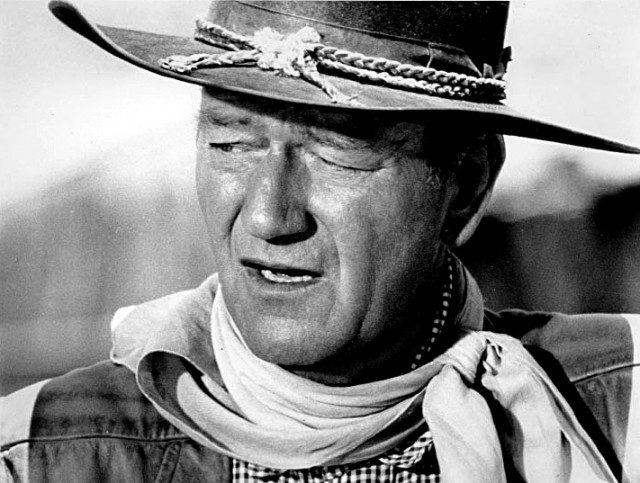
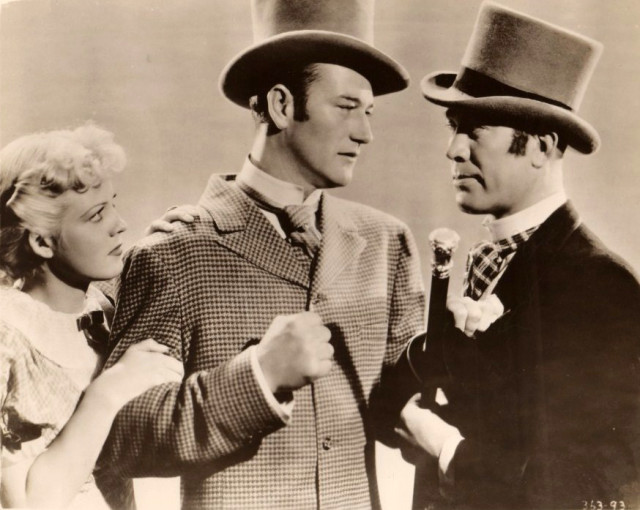
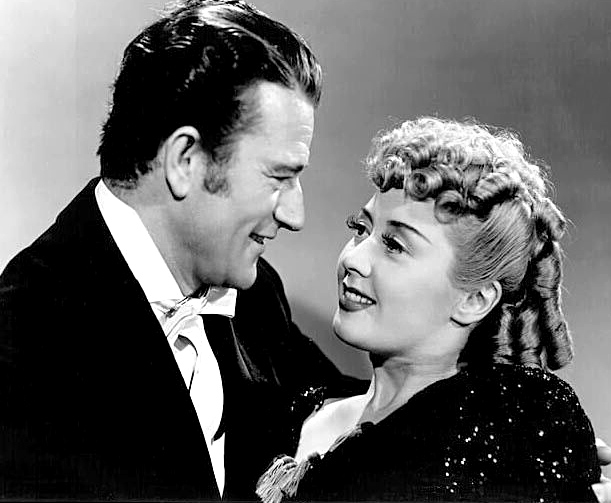
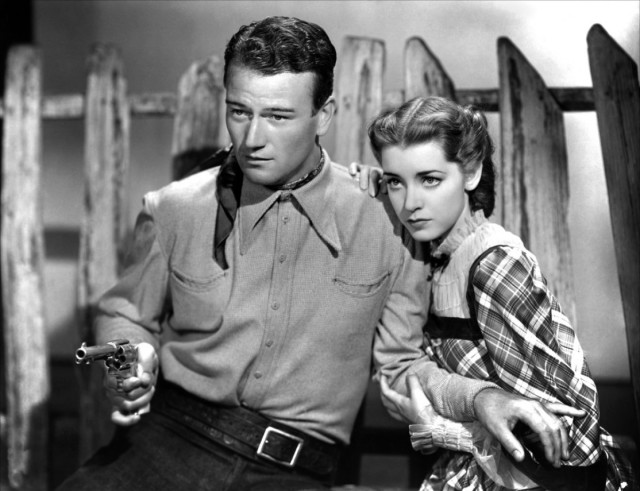
Wayne’s enduring status as an iconic American was formally recognized by the U.S. government in the form of the two highest civilian decorations. On May 26th, 1979, he was awarded theCongressional Gold Medal. Hollywood figures and American leaders from across the political spectrum, including Maureen O’Hara, Elizabeth Taylor, Frank Sinatra, Mike Frankovich, Katharine Hepburn, General and Mrs. Omar Bradley, Gregory Peck, Robert Stack, James Arness, and Kirk Douglas, testified to Congress in support of the award. Robert Aldrich, president of the Directors Guild of America, made a particularly notable statement:
”It is important for you to know that I am a registered Democrat and, to my knowledge, share none of the political views espoused by Duke. However, whether he is ill disposed or healthy, John Wayne is far beyond the normal political sharpshooting in this community. Because of his courage, his dignity, his integrity, and because of his talents as an actor, his strength as a leader, his warmth as a human being throughout his illustrious career, he is entitled to a unique spot in our hearts and minds. In this industry, we often judge people, sometimes unfairly, by asking whether they have paid their dues. John Wayne has paid his dues over and over, and I’m proud to consider him a friend and am very much in favor of my government recognizing in some important fashion the contribution that Mr. Wayne has made”.
